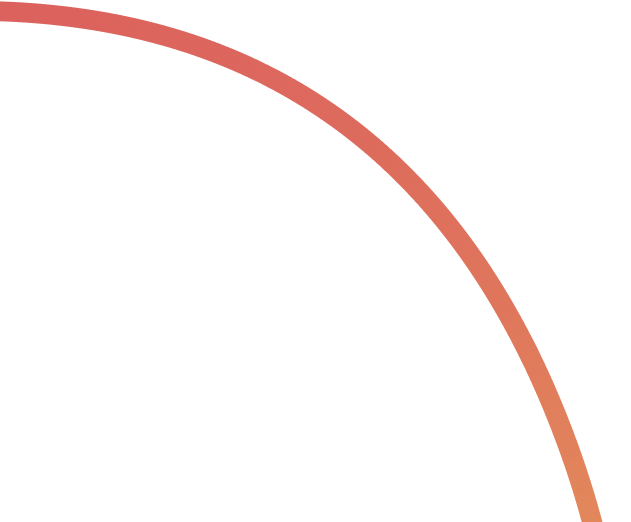Agile vs Waterfall: What Are The Main Differences Between The Two?
There are so many factors to consider when it comes to successfully completing a project with Agile vs Waterfall. There’s the project timeline, the deliverables that you need to accomplish, and the key players of the project.
However, before thinking of all of this, project managers must first decide on the best project management framework that they want to apply for managing their project. That’s where the discussion on Agile vs. Waterfall comes in.
An introduction to Agile and Waterfall
If you’re not familiar with the Agile and Waterfall methodologies, there are key ways you can differentiate the two.
For starters, the Waterfall methodology vs. the Agile methodology can be considered the more straightforward way of completing a project. That’s because it follows a linear approach with different phases – with each phase having to be completed before moving onto the next.
Agile, on the other hand, is a very team-based approach. It provides more flexibility in terms of reviewing and possibly revisiting deliverables. Instead of phases, this methodology implements ‘sprints,’ which are set periods of time to accomplish different project tasks.
Agile or Waterfall: why it’s important to know which to use
Choosing the right methodology can prove to be greatly beneficial for your project.
Firstly, it provides a framework for your team – one that gives the project an overall structure that people can refer to. Additionally, choosing the right methodology can boost the productivity of your team and help them go about their tasks as efficiently as possible. It also helps you make the most of what you have - whether in terms of your team structure, your timings, or your resources.
This is why you should know the differences of the Waterfall vs. the Agile methodologies. Read on for a more in depth look at the two!
The Waterfall Methodology
The Waterfall Methodology deals with sequential phases. Before moving onto another part of the project, there must first be a sign-off on the current phase that the team is on. This is because each phase is dependent on the previous one.
The Waterfall methodology clearly defines the start, middle, and end of each project. The process for it is quite simple: it usually starts with gathering all the requirements and resources needed for the project. Next, the team aligns on the project goals and tasks.
Once this is done, they go through the different phases and complete each one.

Advantages of the Waterfall Methodology
This methodology has a number of advantages:
- Easy to understand: The process of the Waterfall methodology is very straightforward.. Additionally, it can be easier to bring members of the team up to speed on the deliverables since everything is laid out from the start. This is especially true when there is proper and thorough documentation of every phase.
- Clear agreement on deliverables: When it comes to using the Waterfall methodology, the goals and deliverables of projects are well defined. They remain the same all throughout. The project development also doesn’t begin until its requirements are clearly stated. This makes planning less stressful for everyone. Also, it’s easier to track where the team is in terms of progress because there is no room for surprises.
- No overlapping phases: Following the Waterfall approach means that you must first complete each phase before proceeding to the next one. This makes both tracking the project’s progress and aligning the team members less of a hassle. It also creates a clear understanding throughout the team regarding their progress.
Disadvantages of the waterfall methodology
Similarly, it also has a number of disadvantages:
- Lack of flexibility: There is not much room for change or different iterations when it comes to this methodology. When we compare the Waterfall model vs. the Agile model, the former makes it difficult to implement changes in the project details or deliverables. Once you complete a phase, it’s also difficult to make revisions to activities in it if you already moved to the next phase..
- Long planning duration: Since you need to iron out all the details before starting a new project, the Waterfall methodology can often take a long time in the planning phase. In the worst case scenario, this may cause delays in the project’s execution. In turn, it may affect the timelines for other projects.
- The testing phase comes later on: Since this methodology is linear, testing whether or not a product works usually happens in the latter phases. This sometimes creates a dissonance between one’s expectations and the result of the project itself. Additionally, revisions often include a lot of new functionality or products which can be hard to test.
The Agile Methodology
The Agile methodology puts emphasis on speed and constant collaboration. It doesn’t focus on having everything mapped out at the beginning. Instead, the focus is on identifying the problem and breaking down the different ways it can be solved.
From there, the team creates various ‘sprints.’ Sprints can be understood as the agile equivalents to Waterfall phases. In project management, these sprints are used to create iterations of the project’s end goal. Teams conclude a sprint with a retrospective and set a new list of items that need to be completed.
This approach promotes adaptability. Plus, unlike Waterfall, Agile doesn’t follow a linear path. Constant cycles of feedback and approvals happen when using this methodology. Usually, this involves a lot of refining and changes if necessary.

Advantages of the agile methodology
Just like the Waterfall method, Agile also has distinct advantages:
- Ease in making project changes: If we compare the Waterfall vs. Agile approaches based solely on flexibility, the Agile approach is the clear winner. That’s because its sprints make the creation of different iterations very easy. Additionally, if any changes need to be done throughout the project, it can easily be implemented. Similarly, the project’s end goal can be better defined in the process as more data comes up from the different sprints.
- Faster turn-around time: Because this methodology doesn’t put as much emphasis on structure as Waterfall, turn-around times are much faster. That’s because it focuses on completing iterations rather than getting the perfect product from the first time. This also means that there’s less stress when it comes to chasing deadlines.
- Improved product quality: The Agile method is all about going through cycles to see how a team can improve on something. Instead of focusing on timings, this approach focuses on quality control. For example, an Agile approach to a product release would be producing an initial version. Then, the team can slowly build a better one after each sprint.
Disadvantages of the agile methodology
You’re now wondering what this methodology’s disadvantages are. Here are a few:
- Unpredictability of project factors: When we compare the Waterfall method vs. the Agile method, Agile has less defined project terms. For instance, an overall completion date for the project may be harder to pin down, and several sprints may be added throughout the process. Changes like these can affect your resources.
- Requires full commitment: The Agile methodology works best if your team members can fully focus on the project at hand. That’s because constant collaboration and being quick on their feet is crucial. Under Agile, you need a whole umbrella of expertise constantly. Fast iteration and testing means more team members need to be available at every stage of the project.
- Possibility of fragmented output: Because this methodology focuses more on completing sprints quickly, it can be easy to lose sight of the bigger picture. This may result in a product that feels incohesive and almost detached from the original one.
These are only some of the advantages and disadvantages you should take note of in terms of Agile vs. Waterfall methodologies. Both have the same end goal – producing a high-quality product. However, their similarities are undeniable.
Waterfall takes its time in the planning phase and creates a linear plan to follow. Agile focuses more on constant improvement even if it means making changes along the way.
Ultimately when it comes to the Waterfall approach vs. the Agile approach, you should choose one that fits your project needs and goals. You should also consider which one can bring out the most desirable results for your project based on resources, team availability and timeline.
Project Management tools for Waterfall and Agile Methodologies
The beauty of technology is that it makes everything faster, easier, and more efficient. To better illustrate how you can use tech tools to optimize whatever methodology you choose, let’s demonstrate it using Rock.
Rock is an all-in-one tool which allows you to enhance your task management skills, no matter which project management methodology you choose. For the Waterfall methodology, you can use a calendar to keep track of your progress.
If you go to Rock’s calendar view in the Tasks mini-app, you see an overview of your tasks displayed in a calendar. This way you can easily keep an eye on the different phases of your projects.

Rock also has Sprints, if you are more keen on using the Agile methodology. You can create Sprints using the Tasks mini-app. After you define your sprints, you can easily add tasks and assign people who should work on them.
No matter what side you are on when it comes to team Agile vs. team Waterfall, an effective project management tool can help things be more seamless and efficient. Rock has the ability to streamline your tasks and messaging for either methodology.

With the help of Rock, you can make sure that you’re well connected to your team by housing everything you’ll need for the project. This includes messaging, task creation, file sharing, and collaboration with members inside and outside of your organization.
Make project management as easy as it can be with Rock!Interested in using Rock? Download the app today!





















